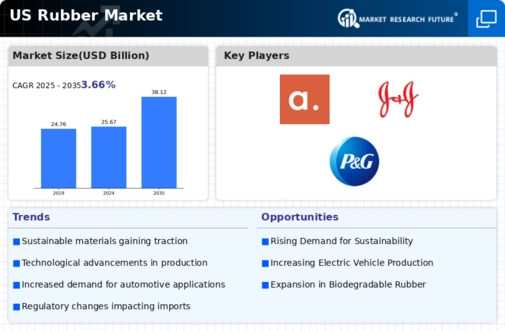US Rubber Market Summary
The US Rubber market is projected to grow from 25.67 USD Billion in 2024 to 38.12 USD Billion by 2035, reflecting a robust CAGR of 3.66%.
Key Market Trends & Highlights
US Rubber Key Trends and Highlights
- The market valuation is expected to increase from 25.67 USD Billion in 2024 to 38.12 USD Billion by 2035.
- The compound annual growth rate (CAGR) for the US Rubber market is estimated at 3.66% from 2025 to 2035.
- This growth trajectory indicates a steady demand for rubber products across various sectors in the United States.
- Growing adoption of sustainable materials due to environmental regulations is a major market driver.
Market Size & Forecast
| 2024 Market Size | 25.67 (USD Billion) |
| 2035 Market Size | 38.12 (USD Billion) |
| CAGR (2025 - 2035) | 3.66% |
Major Players
Apple Inc (US), Microsoft Corp (US), Amazon.com Inc (US), Alphabet Inc (US), Berkshire Hathaway Inc (US), Meta Platforms Inc (US), Tesla Inc (US), Johnson & Johnson (US), Visa Inc (US), Procter & Gamble Co (US)













